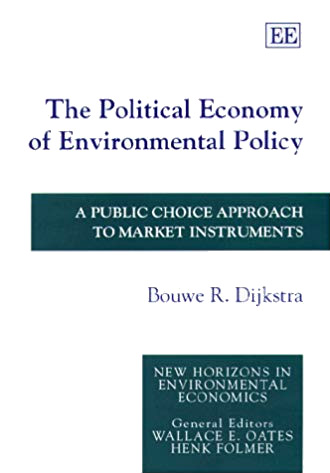Space Capitalism covers an exciting subject: the potential of a free market in space exploration, settlement, and commerce. But the book does not deliver on its promise. In what follows I will briefly summarize the authors’ arguments, and then explain why this volume is best avoided.
The brief introductory chapter makes explicit the authors’ goals: “We argue two things in this book. One, space travel is vital and beneficial to human well-being. Two, it should be done privately; the state should be kept as far from this initiative as possible” (p. 1). This chapter mostly lays out the ethical perspective underlying the work and surveys, at a general level, the technological and economic problems that must be overcome for humans to advance beyond the solar system. The ethical perspective is delved into further in chapter two. Railing against “man’s inhumanity to man,” the authors advocate private space travel and exploration, free from state coercion. The authors “eschew state power in space because we want to restrict government inhumanity to the narrowest sphere possible if not eliminate this scourge altogether” (p. 20). The third chapter extends the material of the previous two, briefly summarizing the economics and ethics of private vs. public ownership of resources.
The fourth chapter is the first to focus on space. The authors discuss the history of public-led space launch projects and find them lacking. Chapter five considers difficult questions associated with ownership in space, such as property rights to particular orbits. The authors also discuss homesteading celestial real estate. The sixth chapter focuses specifically on the moon, considering possibilities for space tourism, agriculture, and manufacturing. Chapter seven considers travel to the inner planets, such as Mars and Venus, as well as the interplanetary moons. Curiously, a good portion of this chapter is spent critiquing a New York Times article critical of Martian exploration, with relatively less time and space given to scholarship on the question. The eighth chapter extends the analysis to Jupiter, Saturn, Uranus, and Neptune. Chapter nine completes the celestial overview, covering asteroids and comets, and concluding with a brief discussion of space debris.
Starting with chapter ten, the analysis broadens once again to consider institutional possibilities for space exploration and settlement. In this chapter, the authors critique NASA and public funding of STEM initiatives, including public education itself. Chapter eleven considers public goods, and in particular terraforming—the transformation of barren worlds into habitable worlds. In chapter twelve, the authors consider the important institutions of international space law and the United Nations. The authors do discuss the 1967 Outer Space Treaty (OST), the bedrock of international space law, but unfortunately their analysis is superficial. Chapter thirteen contains a very basic analysis of the economics of time (capital) markets and their application to long-term space investment. Chapter fourteen contains brief biographical sketches of current space entrepreneurs, such as Jeff Bezos (Blue Origin), Richard Branson (Virgin Galactic), and Elon Musk (SpaceX). Chapter fifteen does the same for current writers on the economics of space. Chapter sixteen, the concluding chapter, recapitulates and ends on an upbeat note about the promises of purely privatized space exploration, settlement, and commerce.
The authors’ research question is fascinating. With major innovations in the commercial space sector, as well as the legal framework for space in several nations, it is an exciting time to engage the literature on the law and economics of space policy. However, the authors’ contribution falls short. The initial chapters are an unsophisticated treatment of libertarianism. The middle chapters are an unsophisticated treatment of space science. And the concluding chapters are a muddled synthesis that do not shed light on any of the important questions concerning the legal framework for space, or how we can feasibly get to where the authors want to go. Their lazy analysis of the Outer Space Treaty is particularly disappointing. Citing language from the treaty that asserts the exploration of space ought to be conducted for the benefit of all mankind, the authors dismiss the governing framework for space that currently exists as irredeemably socialist. Economists should know better than to confuse the ends (“common interest of all mankind”) for the means (regulation, cronyism, etc.). In addition, the authors would be surprised to discover there are a several legal experts who attest that, because OST Article II (mentioned in passing, but not analyzed) forbids the extension of territorial jurisdiction to the celestial bodies, the treaty actually creates significant possibilities for radical freedom in space. But the nuances of space law, domestic and international, seem to be less interesting to the authors than repeatedly citing the non-aggression principle. The non-aggression principle is all well and good, but do we really need to read two hundred pages if the authors are going to assume their conclusion?
In brief, I cannot recommend this volume for scholars interested in space policy. Aside from basic scientific facts that could easily be discovered through an online search, I cannot think of a single thing I learned from it. There are many interesting analyses of the unique problems posed by the law and economics of space policy. Unfortunately, this is not one of them.
| Other Independent Review articles by Alexander William Salter | ||
| Fall 2020 | Malignant Monetary Monocentricity | |
| Summer 2020 | Ideologies, Institutions, and Interests: Why Economic Ideas Don’t Compete on a Level Playing Field | |
| Spring 2018 | The Political Economy of Public Debt: Three Centuries of Theory and Evidence | |
| [View All (8)] | ||



















